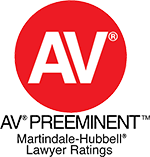Theft & Larceny
Under New York Penal Law section 155.05, Larceny involves the following conduct: A person steals property and commits larceny when, with intent to deprive another of property or to appropriate the same to himself or to a third person, he wrongfully takes, obtains or withholds such property from an owner thereof.
When is Best Time to Act?
Given the high risk involved with a burglary charge, it is important to seek experienced counsel if you are the subject of an investigation or are detained by law enforcement.
Types of Crimes & Charges
Under New York Law Larceny is committed in any of the following ways:
- By conduct defined as common law larceny.
- By issuing a bad check.
- By acquiring lost property.
- By false promise.
- By extortion.
A person obtains property by extortion when he compels or induces another person to deliver such property to himself or to a third person by means of instilling in him a fear that, if the property is not so delivered, the actor or another will:
- Cause physical injury to some person in the future; or
- Cause damage to property; or
- Engage in other conduct constituting a crime; or
- Accuse some person of a crime or cause criminal charges to be instituted against him; or
- Expose a secret or publicize an asserted fact, whether true or false, tending to subject some person to hatred, contempt or ridicule; or
- Cause a strike, boycott or other collective labor group action injurious to some person’s business; or
- Testify or provide information or withhold testimony or information with respect to another’s legal claim or defense; or
- Use or abuse his position as a public servant by performing some act within or related to his official duties, or by failing or refusing to perform an official duty, in such manner as to affect some person adversely; or
- Perform any other act which would not in itself materially benefit the actor but which is calculated to harm another person materially with respect to his health, safety, business, calling, career, financial condition, reputation or personal relationships.
Criminal Schemes
Criminal schemes involving theft occupy a wide range of conduct including simple larcenies to schemes involving fraud and those which rely on positions of power or otherwise legitimate organizations to perpetrate the crime.
Related Crimes
New York criminal laws use the term “larceny” to describe theft laws. In New York, larceny occurs when a person “wrongfully takes, obtains or withholds” property from its rightful owner, with the intent to deprive the owner of such property. (N.Y. Penal Law § 155.05.) New York laws also identify a number of specific methods of committing larceny, including: larceny by trick or embezzlement obtaining property by false pretenses acquiring lost property issuing a bad check, or taking property by extortion. (Penal Law § 155.05.)
Regulations/Legislation
Article 155 – NY Penal Law NY Laws › Penal Law › Part 3 › Title J LARCENY 155.00 Larceny;
definitions of terms. 155.05 Larceny;
defined. 155.10 Larceny;
no defense. 155.15 Larceny;
defenses. 155.20 Larceny;
value of stolen property. 155.25 Petit larceny. A MISD 155.30 Grand larceny in the fourth degree. E FELONY 155.35 Grand larceny in the third degree. D FELONY 155.40 Grand larceny in the second degree. C FELONY 155.42 Grand larceny in the first degree. B FELONY 155.43 Aggravated grand larceny of an automated teller machine. C FELONY 155.45 Larceny; pleading and proof.
S 155.00 Larceny; definitions of terms. The following definitions are applicable to this title:
- “Property” means any money, personal property, real property, computer data, computer program, thing in action, evidence of debt or contract, or any article, substance or thing of value, including any gas, steam, water or electricity, which is provided for a charge or compensation.
- “Obtain” includes, but is not limited to, the bringing about of a transfer or purported transfer of property or of a legal interest therein, whether to the obtainer or another.
- “Deprive.” To “deprive” another of property means:
-
-
- to withhold it or cause it to be withheld from him permanently or for so extended a period or under such circumstances that the major portion of its economic value or benefit is lost to him, or
- to dispose of the property in such manner or under such circumstances as to render it unlikely that an owner will recover such property.
-
-
- “Appropriate.” To “appropriate” property of another to oneself or a third person means:
-
-
- to exercise control over it, or to aid a third person to exercise control over it, permanently or for so extended a period or under such circumstances as to acquire the major portion of its economic value or benefit, or
- to dispose of the property for the benefit of oneself or a third person
-
-
- “Owner.” When property is taken, obtained or withheld by one person from another person, an “owner” thereof means any person who has a right to possession thereof superior to that of the taker, obtainer or withholder. A person who has obtained possession of property by theft or other illegal means shall be deemed to have a right of possession superior to that of a person who takes, obtains or withholds it from him by larcenous means. A joint or common owner of property shall not be deemed to have a right of possession thereto superior to that of any other joint or common owner thereof. In the absence of a specific agreement to the contrary, a person in lawful possession of property shall be deemed to have a right of possession superior to that of a person having only a security interest therein, even if legal title lies with the holder of the security interest pursuant to a conditional sale contract or other security agreement.
- “Secret scientific material” means a sample, culture, micro-organism, specimen, record, recording, document, drawing or any other article, material, device or substance which constitutes, represents, evidences, reflects, or records a scientific or technical process, invention or formula or any part or phase thereof, and which is not, and is not intended to be, available to anyone other than the person or persons rightfully in possession thereof or selected persons having access thereto with his or their consent, and when it accords or may accord such rightful possessors an advantage over competitors or other persons who do not have knowledge or the benefit thereof.
- “Credit card” means any instrument or article defined as a credit card in section five hundred eleven of the general business law.
-
-
-
- “Debit card” means any instrument or article defined as a debit card in section five hundred eleven of the general business law.
- “Public benefit card” means any medical assistance card, food stamp assistance card, public assistance card, or any other identification, authorization card or electronic access device issued by the state or a social services district as defined in subdivision seven of section two of the social services law, which entitles a person to obtain public assistance benefits under a local, state or federal program administered by the state, its political subdivisions or social services districts.
- “Access device” means any telephone calling card number, credit card number, account number, mobile identification number, electronic serial number or personal identification number that can be used to obtain telephone service.
-
-
-
- “Service” includes, but is not limited to, labor, professional service, a computer service, transportation service, the supplying of hotel accommodations, restaurant services, entertainment, the supplying of equipment for use, and the supplying of commodities of a public utility nature such as gas, electricity, steam and water. A ticket or equivalent instrument which evidences a right to receive a service is not in itself service but constitutes property within the meaning of subdivision one.
- “Cable television service” means any and all services provided by or through the facilities of any cable television system or closed circuit coaxial cable communications system, or any microwave or similar transmission service used in connection with any cable television system or other similar closed circuit coaxial cable communications system.
S 155.05 Larceny; defined.
- A person steals property and commits larceny when, with intent to deprive another of property or to appropriate the same to himself or to a third person, he wrongfully takes, obtains or withholds such property from an owner thereof.
- Larceny includes a wrongful taking, obtaining or withholding of another`s property, with the intent prescribed in subdivision one of this section, committed in any of the following ways:
-
- By conduct heretofore defined or known as common law larceny by trespassory taking, common law larceny by trick, embezzlement, or obtaining property by false pretenses;
- By acquiring lost property. A person acquires lost property when he exercises control over property of another which he knows to have been lost or mislaid, or to have been delivered under a mistake as to the identity of the recipient or the nature or amount of the property, without taking reasonable measures to return such property to the owner;
- By committing the crime of issuing a bad check, as defined in section 190.05;
- By false promise. A person obtains property by false promise when, pursuant to a scheme to defraud, he obtains property of another by means of a representation, express or implied, that he or a third person will in the future engage in particular conduct, and when he does not intend to engage in such conduct or, as the case may be, does not believe that the third person intends to engage in such conduct. In any prosecution for larceny based upon a false promise, the defendant`s intention or belief that the promise would not be performed may not be established by or inferred from the fact alone that such promise was not performed. Such a finding may be based only upon evidence establishing that the facts and circumstances of the case are wholly consistent with guilty intent or belief and wholly inconsistent with innocent intent or belief, and excluding to a moral certainty every hypothesis except that of the defendant`s intention or belief that the promise would not be performed;
- By extortion. A person obtains property by extortion when he compels or induces another person to deliver such property to himself or to a third person by means of instilling in him a fear that, if the property is not so delivered, the actor or another will:
- Cause physical injury to some person in the future; or
- Cause damage to property; or
- Engage in other conduct constituting a crime; or
- Accuse some person of a crime or cause criminal charges to be instituted against him; or
- Expose a secret or publicize an asserted fact, whether true or false, tending to subject some person to hatred, contempt or ridicule; or
- Cause a strike, boycott or other collective labor group action injurious to some person`s business; except that such a threat shall not be deemed extortion when the property is demanded or received for the benefit of the group in whose interest the actor purports to act; or
- Testify or provide information or withhold testimony or information with respect to another`s legal claim or defense; or
- Use or abuse his position as a public servant by performing some act within or related to his official duties, or by failing or refusing to perform an official duty, in such manner as to affect some person adversely; or
- Perform any other act which would not in itself materially benefit the actor but which is calculated to harm another person materially with respect to his health, safety, business, calling, career, financial condition, reputation or personal relationships.
S 155.10 Larceny; no defense.
The crimes of (a) larceny committed by means of extortion and an attempt to commit the same, and (b) bribe receiving by a labor official as defined in section 180.20, and bribe receiving as defined in section 200.05, are not mutually exclusive, and it is no defense to a prosecution for larceny committed by means of extortion or for an attempt to commit the same that, by reason of the same conduct, the defendant also committed one of such specified crimes of bribe receiving.
S 155.15 Larceny; defenses.
- In any prosecution for larceny committed by trespassory taking or embezzlement, it is an affirmative defense that the property was appropriated under a claim of right made in good faith.
- In any prosecution for larceny by extortion committed by instilling in the victim a fear that he or another person would be charged with a crime, it is an affirmative defense that the defendant reasonably believed the threatened charge to be true and that his sole purpose was to compel or induce the victim to take reasonable action to make good the wrong which was the subject of such threatened charge.
S 155.20 Larceny; value of stolen property.
For the purposes of this title, the value of property shall be ascertained as follows:
- Except as otherwise specified in this section, value means the market value of the property at the time and place of the crime, or if such cannot be satisfactorily ascertained, the cost of replacement of the property within a reasonable time after the crime.
- Whether or not they have been issued or delivered, certain written instruments, not including those having a readily ascertainable market value such as some public and corporate bonds and securities, shall be evaluated as follows:
-
- The value of an instrument constituting an evidence of debt, such as a check, draft or promissory note, shall be deemed the amount due or collectable thereon or thereby, such figure ordinarily being the face amount of the indebtedness less any portion thereof which has been satisfied.
- The value of a ticket or equivalent instrument which evidences a right to receive a transportation, entertainment or other service shall be deemed the price stated thereon, if any; and if no price is stated thereon the value shall be deemed the price of such ticket or equivalent instrument which the issuer charges the general public.
- The value of any other instrument which creates, releases, discharges or otherwise affects any valuable legal right, privilege or obligation shall be deemed the greatest amount of economic loss which the owner of the instrument might reasonably suffer by virtue of the loss of the instrument.
- 3. Where the property consists of gas, steam, water or electricity, which is provided for charge or compensation, the value shall be the value of the property stolen in any consecutive twelve-month period.4. When the value of property cannot be satisfactorily ascertained pursuant to the standards set forth in subdivisions one and two of this section, its value shall be deemed to be an amount less than two hundred fifty dollars.
-
S 155.25 Petit larceny.
A person is guilty of petit larceny when he steals property. Petit larceny is a class A misdemeanor.
S 155.30 Grand larceny in the fourth degree.
A person is guilty of grand larceny in the fourth degree when he steals property and when:
- The value of the property exceeds one thousand dollars; or
- The property consists of a public record, writing or instrument kept, filed or deposited according to law with or in the keeping of any public office or public servant; or
- The property consists of secret scientific material; or
- The property consists of a credit card or debit card; or
- The property, regardless of its nature and value, is taken from the person of another; or
- The property, regardless of its nature and value, is obtained by extortion; or
- The property consists of one or more firearms, rifles or shotguns, as such terms are defined in section 265.00 of this chapter; or
- The value of the property exceeds one hundred dollars and the property consists of a motor vehicle, as defined in section one hundred twenty-five of the vehicle and traffic law, other than a motorcycle, as defined in section one hundred twenty-three of such law; or
- The property consists of a scroll, religious vestment, a vessel, an item comprising a display of religious symbols which forms a representative expression of faith, or other miscellaneous item of property which:
-
- has a value of at least one hundred dollars; and
- is kept for or used in connection with religious worship in any building, structure or upon the curtilage of such building or structure used as a place of religious worship by a religious corporation, as incorporated under the religious corporations law or the education law.
-
- The property consists of an access device which the person intends to use unlawfully to obtain telephone service.
- The property consists of anhydrous ammonia or liquified ammonia gas and the actor intends to use, or knows another person intends to use, such anhydrous ammonia or liquified ammonia gas to manufacture methamphetamine. Grand larceny in the fourth degree is a class E felony.
S 155.35 Grand larceny in the third degree.
A person is guilty of grand larceny in the third degree when he or she steals property and:
- When the value of the property exceeds three thousand dollars, or
- The property is an automated teller machine or the contents of an automated teller machine. Grand larceny in the third degree is a class D felony.
S 155.40 Grand larceny in the second degree.
A person is guilty of grand larceny in the second degree when he steals property and when:
- The value of the property exceeds fifty thousand dollars; or
- The property, regardless of its nature and value, is obtained by extortion committed by instilling in the victim a fear that the actor or another person will:
- cause physical injury to some person in the future, or
- cause damage to property, or
- use or abuse his position as a public servant by engaging in conduct within or related to his official duties, or by failing or refusing to perform an official duty, in such manner as to affect some person adversely. Grand larceny in the second degree is a class C felony.
S 155.42 Grand larceny in the first degree.
A person is guilty of grand larceny in the first degree when he steals property and when the value of the property exceeds one million dollars. Grand larceny in the first degree is a class B felony..
S 155.43 Aggravated grand larceny of an automated teller machine.
A person is guilty of aggravated grand larceny of an automated teller machine when he or she commits the crime of grand larceny in the third degree, as defined in subdivision two of section 155.35 of this article and has been previously convicted of grand larceny in the third degree within the previous five years. Aggravated grand larceny of an automated teller machine is a class C felony.
S 155.45 Larceny; pleading and proof.
- Where it is an element of the crime charged that property was taken from the person or obtained by extortion, an indictment for larceny must so specify. In all other cases, an indictment, information or complaint for larceny is sufficient if it alleges that the defendant stole property of the nature or value required for the commission of the crime charged without designating the particular way or manner in which such property was stolen or the particular theory of larceny involved.
- Proof that the defendant engaged in any conduct constituting larceny as defined in section 155.05 is sufficient to support any indictment, information or complaint for larceny other than one charging larceny by extortion. An indictment charging larceny by extortion must be supported by proof establishing larceny by extortion.
Penalties & Punishment
New York larceny crime sets the severity of punishment according to the monetary value of the property involved.
Theft as Petit Larceny
New York law classifies petit larceny as a class A misdemeanor. (N.Y. Penal Law § 155.25.) A sentence for conviction of a class A misdemeanor in New York may include imprisonment for a term not to exceed one year and a fine not to exceed $1,000. (Penal Law § 70.15, § 80.05(1).)
Theft as Grand Larceny in the Fourth Degree
The offense is grand larceny in the fourth degree, a class E felony under New York law. (N.Y. Penal Law § 155.30.) Conviction of a class E felony in New York carries a potential sentence of imprisonment for a term not to exceed four years, and a fine not to exceed the greater of $5,000 or double the amount of the offender’s gain from the theft. (Penal Law § 70.00(2)(e), § 80.00(1).)
Theft as Grand Larceny in the Third Degree
The offense is grand larceny in the third degree, a class D felony in New York. (N.Y. Penal Law § 155.35.) A sentence for conviction of a class D felony will include imprisonment for a term not to exceed seven years, and a fine not to exceed the greater of $5,000 or double the amount of the offender’s gain from the theft. (Penal Law § 70.00(2)(d), § 80.00(1).)
Theft as Grand Larceny in the Second Degree
The offense is grand larceny in the second degree, a class C felony. (N.Y. Penal Law § 155.40.) The potential sentence for a class C felony in New York is imprisonment for a term not to exceed 15 years, and a fine not to exceed $15,000. (Penal Law § 70.00(2)(c), § 80.00(1).)
Theft as Grand Larceny in the First Degree
The offense is grand larceny in the first degree, a class B felony. (N.Y. Penal Law § 155.42.) The sentence for a class B felony in New York includes imprisonment for a term not to exceed 25 years, and a fine not to exceed $30,000. (Penal Law § 70.00(2)(b), § 80.00(1).)
Successful Defense
Larceny charges can be defended based on the intent element in which the offender is alleged to have maintained a wrongful intent to deprive one of property or may involve challenging the value of the property so as to achieve reduction in the offense category.
Differences between State & Federal Charges
State law generally governs the act of larceny; however, Federal jurisdiction can be triggered if the property taken belongs to the United States government. Federal Larceny Larceny is a wrongful taking and carrying away of personal property of another with fraudulent intent to deprive the owner of his property without his consent.” (18 U.S.C. § 641). The only element required by the statute to be guilty of a federal theft crime is the taking of property belonging to the United States with the intention of converting it to one’s own use.” Federal law defines property belonging to the United States as “any record, voucher, money, or thing of value of the United States or of any department or agency thereof, or any property made or being made under contract for the United States or any department or agency thereof.”
High Profile/ Govt. cases
Larceny cases largely involve petit larceny charges arising from shoplifting. As a financial center, New York witnesses a large number of larcenies stemming from financial misconduct trough financial institutions which can involve massive sums of money and significant penalties.
Theft & Larceny Criminal Lawyers
We defend clients accused of every type of theft & larceny crime. Below is a list of some of our featured theft practice areas:
Burglary
False Pretenses
Grand Larceny
Identity Theft
Motor Vehicle Theft
Petit Larceny
Robbery








